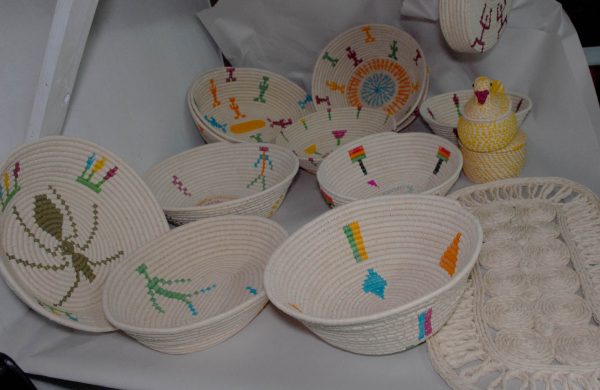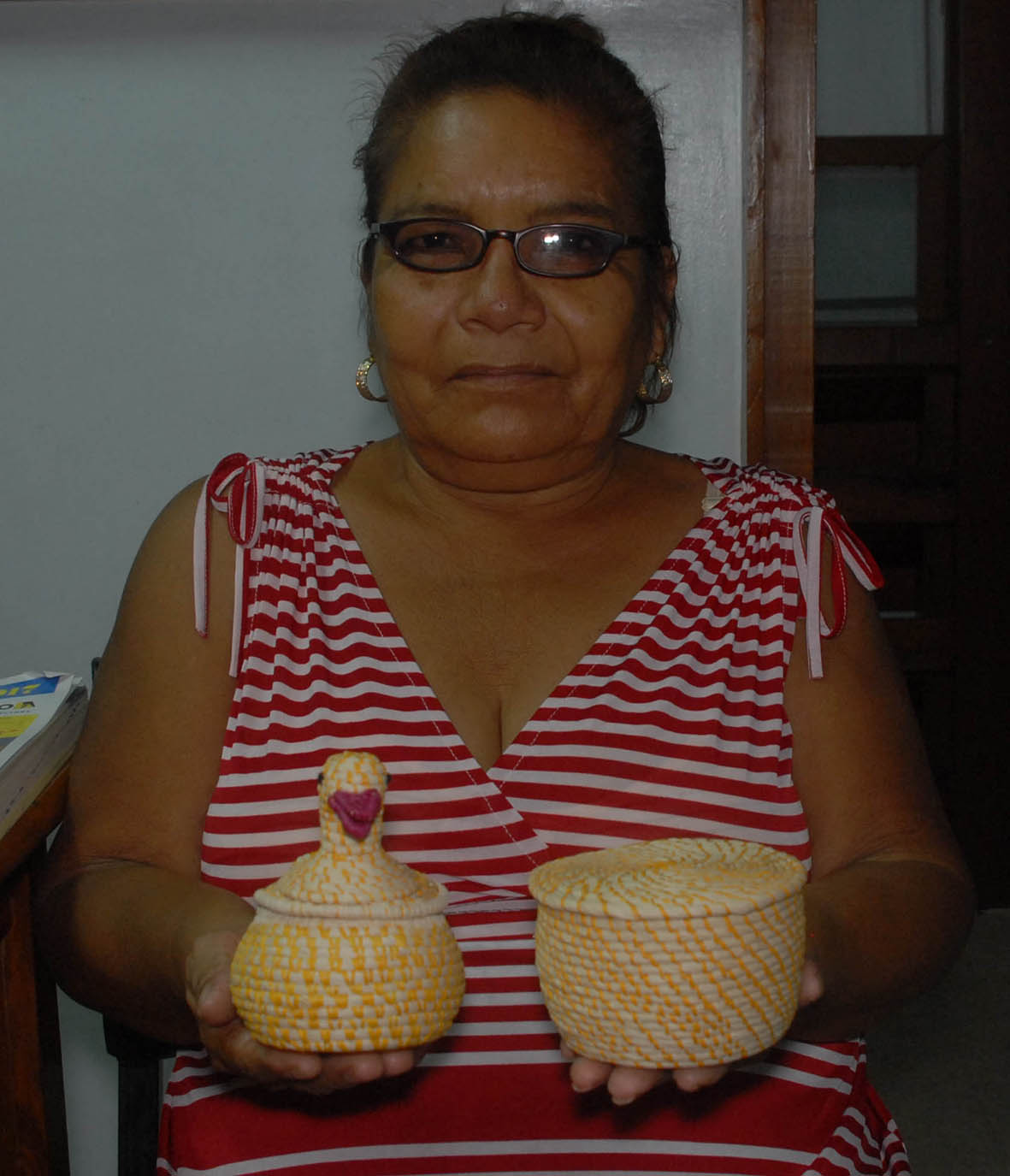You could tell from the expressionless mask that she wore that Veronica Clinton had heard it all before. When she came to see us on Friday, lugging black plastic bags of handbags, decorative fruit baskets and smaller works of craft, Veronica had not come for a gaff about the skills of Amerindian craftsmen and women and the beauty of their creations; she wanted to talk about the reasons why those skills had not, over many decades, been meaningfully materially rewarded and what, even now, could be done to have the work of our indigenous people not treated like some pretty sideshow to be patronizingly applauded but never really accorded its rightful commercial place.
She wanted people to know that Amerindian craft exists for more than just the kind of patronizing admiration to which it has long been subjected.
Still, it was hard not to applaud the skills exemplified in the pieces that she had brought for us to see. The fruit baskets would more than hold their own in the most tasteful of living rooms, here in Guyana and in most other places.

The tightly plaited strands of Etay palm broken in their intricate pattern by brightly coloured Amerindian motifs and ending their journey in remarkably neatly finished decorative pieces were works of outstanding brilliance, first rate examples of the best, not just of Amerindian craft but of any genre of creative work that Guyana has to offer. In a sense, their quality provides an eminent justification for the frustration many Amerindians have expressed over the economic underachievement of their indigenous handiwork. Veronica seemed to want to make that point with added vigour.
There used to be a time when the ‘critics’ would say that you can’t put a price on creativity. People like Veronica have come to see that perspective as pure patronage, the kind of pronouncement that brushes aside far too casually the reality of the limited economies of Amerindian communities. Veronica is an Arawak woman from St. Francis Mission, Mahaicony, the only Amerindian community in Region Five. Logging is the only significant economic activity in her community and from that perspective she believes that it would be an act of the greatest folly not to put a price on creativity.
She told us that she, like the other girls in the community had been taught by their mothers to work with their hands. It was, she says, as much a way of preparing them for the pursuit of an alternative economic option as it was the handing down of a tradition. The women of the Mission, she said, had learnt well and had been painstaking in their attention to both detail and ‘finish.’
Working with their hands has not worked as a viable economic option…not for the women of St. Francis nor for the women of Amerindian communities as a whole. Taken in the context of the real development of communities, broader national support for the creative work of the Amerindians has been largely tokenistic. Veronica is patently reluctant to say what she knows….that there has been, over time, no really robust official effort to invest meaningfully in the creation of a lucrative market, at home and overseas, for Amerindian creative work; that the patronage has never really extended much beyond Amerindian stalls at events like GuyExpo; that the overdone proliferation of cheaper Chinese creations does little to help the Amerindian cause and that the Amerindian craftspeople cannot, on their own, afford the marketing costs of putting indigenous craft on the local, regional and global markets.
Veronica recalls the dichotomy between the time-consuming effort of the women of St. Francis to turn out their best work and the countless times when half-baked marketing plans fell flat on their faces. Public officials, she says, would come to St. Francis and fuss over the ‘pretty work’ of the Amerindian women. Those pieces would be prepared specifically for their viewing. The visitors would buy what they considered to be the most attractive pieces and afterwards they may be a follow-up order for a few more. Then it would be back to the proverbial square one.
In one of those rare moments when she refuses to confine herself to the constraints of our interview Veronica ‘cuts loose’ on her own accord. She vouches for the durability of the Etay and Tibisiri work of the women of St. Francis when set against the high-priced imports, appealing for official support for local and international marketing then directly asking local consumers to allow the women folk of her community a real opportunity to impress them. It was, she says, an appeal for Amerindian craft as a whole. At that moment it was she, not us, who was in charge.
For a while we examined together the pieces she had brought with to the city in order to provide us with examples of her handiwork and afterwards to deposit them with a contact in Georgetown who would dispose of them for her. In many instances the turnover was slow enough as to cause her to have to wait for the returns from one consignment in order to purchase raw materials for another. There is no doubt in her mind that if a structured marketing arrangement could be put in place to target, particularly, representatives of international organizations, the diplomatic corps, tourists and visitors to Guyana on one mission or another, then that would be sufficient to absorb a significant portion of Amerindian craft.
Veronica explains that the baskets made from the Etay Palm were amongst the best sellers but that production costs had been affected by the rising costs of the Etay palm itself. Constant harvesting had put pressure on supplies and on account of this the community had learnt the wisdom of throwing the seeds back into the swamp so that there could be some measure of regeneration. These days the harvesters of Etay need to go deeper into the swamp since the more accessible palms had long been harvested.
The Maraicobie Craft Group to which Veronica belongs has thirty-four women. There are no training workshops here. Each of them brings their skills from their homes and each one gets better by embracing the collective habits of the group….attention to detail, neatness and attentive finish. We could see all of that in the work that Veronica brought for us to see. The irony is that rather than celebrate the skills that Guyana’s indigenous people have to offer, the excellence serves to exemplify a national failure to move their work into the realm of commercial success that it deserves. That, it seems, is the underlying theme of Veronica’s message.





